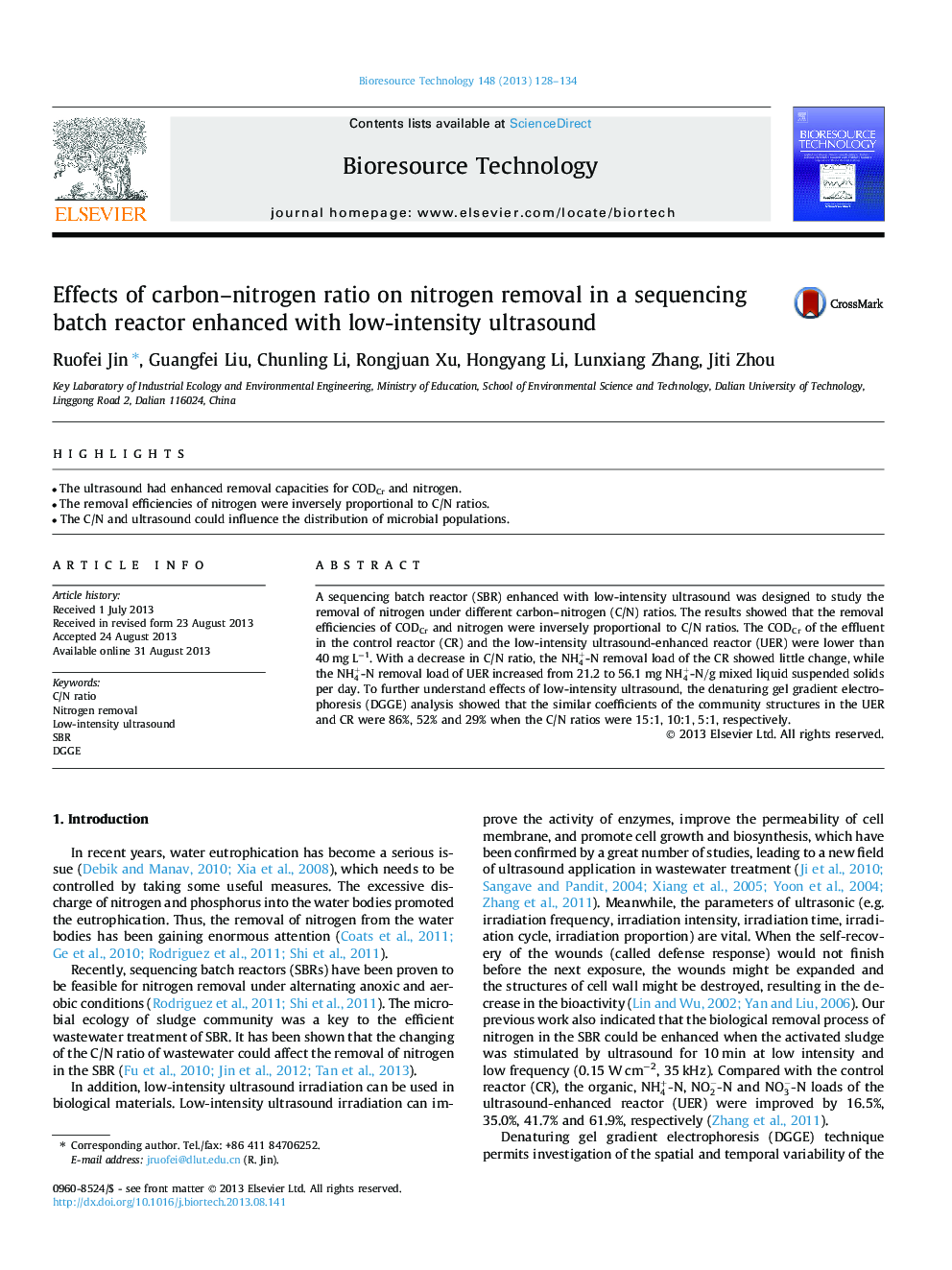| Article ID | Journal | Published Year | Pages | File Type |
|---|---|---|---|---|
| 7079825 | Bioresource Technology | 2013 | 7 Pages |
Abstract
A sequencing batch reactor (SBR) enhanced with low-intensity ultrasound was designed to study the removal of nitrogen under different carbon-nitrogen (C/N) ratios. The results showed that the removal efficiencies of CODCr and nitrogen were inversely proportional to C/N ratios. The CODCr of the effluent in the control reactor (CR) and the low-intensity ultrasound-enhanced reactor (UER) were lower than 40 mg Lâ1. With a decrease in C/N ratio, the NH4+-N removal load of the CR showed little change, while the NH4+-N removal load of UER increased from 21.2 to 56.1 mg NH4+-N/g mixed liquid suspended solids per day. To further understand effects of low-intensity ultrasound, the denaturing gel gradient electrophoresis (DGGE) analysis showed that the similar coefficients of the community structures in the UER and CR were 86%, 52% and 29% when the C/N ratios were 15:1, 10:1, 5:1, respectively.
Related Topics
Physical Sciences and Engineering
Chemical Engineering
Process Chemistry and Technology
Authors
Ruofei Jin, Guangfei Liu, Chunling Li, Rongjuan Xu, Hongyang Li, Lunxiang Zhang, Jiti Zhou,
